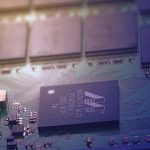As global applications for drones expand, automation and artificial intelligence play an increasingly prominent role in both public and private sectors. Draganfly Inc. and Palladyne AI Corp. have announced a partnership to deploy Palladyne’s Pilot AI software on Draganfly’s uncrewed aerial vehicles (UAVs), aiming to upgrade drone performance in areas like defense, public safety, and industrial operations. The integration is expected to reduce manual workload and unlock new collaborative capabilities for drone fleets managed by a single operator. Insights from industry leaders and signals from recent defense trends show that interest in autonomous drone technology is rapidly rising due to complex operational demands and shifting security environments.
When news outlets have covered Draganfly’s progress in UAV technology before, the emphasis has typically been on hardware innovation and flight endurance. Reports less frequently discussed the use of advanced artificial intelligence for autonomy and swarming behaviors. By contrast, the recent focus on embedding Palladyne’s AI platform suggests a strategic move toward smart collaboration, real-time adaptability, and mission versatility. This illustrates a broader market trend where software-driven intelligence drives value, rather than just airframe improvements alone.
How Does Palladyne’s AI Software Impact UAV Operations?
Palladyne’s Pilot AI is designed to be platform-agnostic and relies on edge processing, allowing multiple drones to work collaboratively as a coordinated team. The software leverages sensor fusion, enabling UAVs to autonomously track, detect, and share real-time data, all while maintaining a human in control. According to Palladyne, benefits extend to dynamic target tracking and swarm management, streamlining interventions across both defense and civilian scenarios. The company claims robots using their software can recognize subtle changes in real-world environments, supporting industries such as logistics, manufacturing, and defense.
What Does the Deal Mean for Draganfly’s Portfolio?
For Draganfly, integrating Palladyne AI’s autonomy suite opens up new possibilities for its UAVs, which already support public safety, mapping, and industrial inspection. Enhanced swarm capabilities and real-time intelligence can lead to more efficient and adaptable mission profiles. Cameron Chell, CEO of Draganfly, commented,
“Palladyne AI is enabling drone platforms to incorporate autonomy features that were even recently limited to large and costly systems.”
He added,
“By having Palladyne Pilot as an embedded option into our platforms, we continue to expand our modular framework and increase our adaptable, mission-critical autonomy, and swarm capabilities that reduce operator workload and extend the effectiveness of our systems across complex use cases.”
How Are Approval and Distribution Handled?
Deployment of this combined technology outside the U.S. remains subject to regulatory approvals. Draganfly recently identified Drone Nerds as a key reseller for its NDAA-compliant drones and also announced a collaboration with Global Ordnance to speed up defense adoption in allied countries. These partnerships underline a growing focus on compliance in both international sales and military procurement, reflecting heightened scrutiny in the global UAV sector.
The collaboration reflects a noticeable shift in how major drone manufacturers and AI firms operate—moving past hardware-centric innovation to rely on advanced, modular software that can adapt to diverse mission scenarios. This approach could allow enterprises and government agencies to deploy fleets that behave collaboratively and respond autonomously in unpredictable environments. For readers tracking automation, it is useful to note that both AI and modular software design are increasingly the differentiators in competitive UAV markets. Understanding how regulatory, operational, and technological trends converge in UAV deployment will allow organizations to make more informed investment and procurement decisions in this dynamic landscape.










